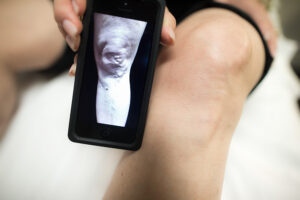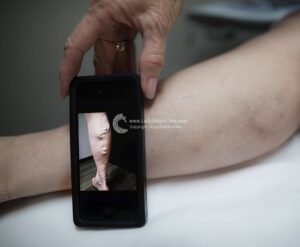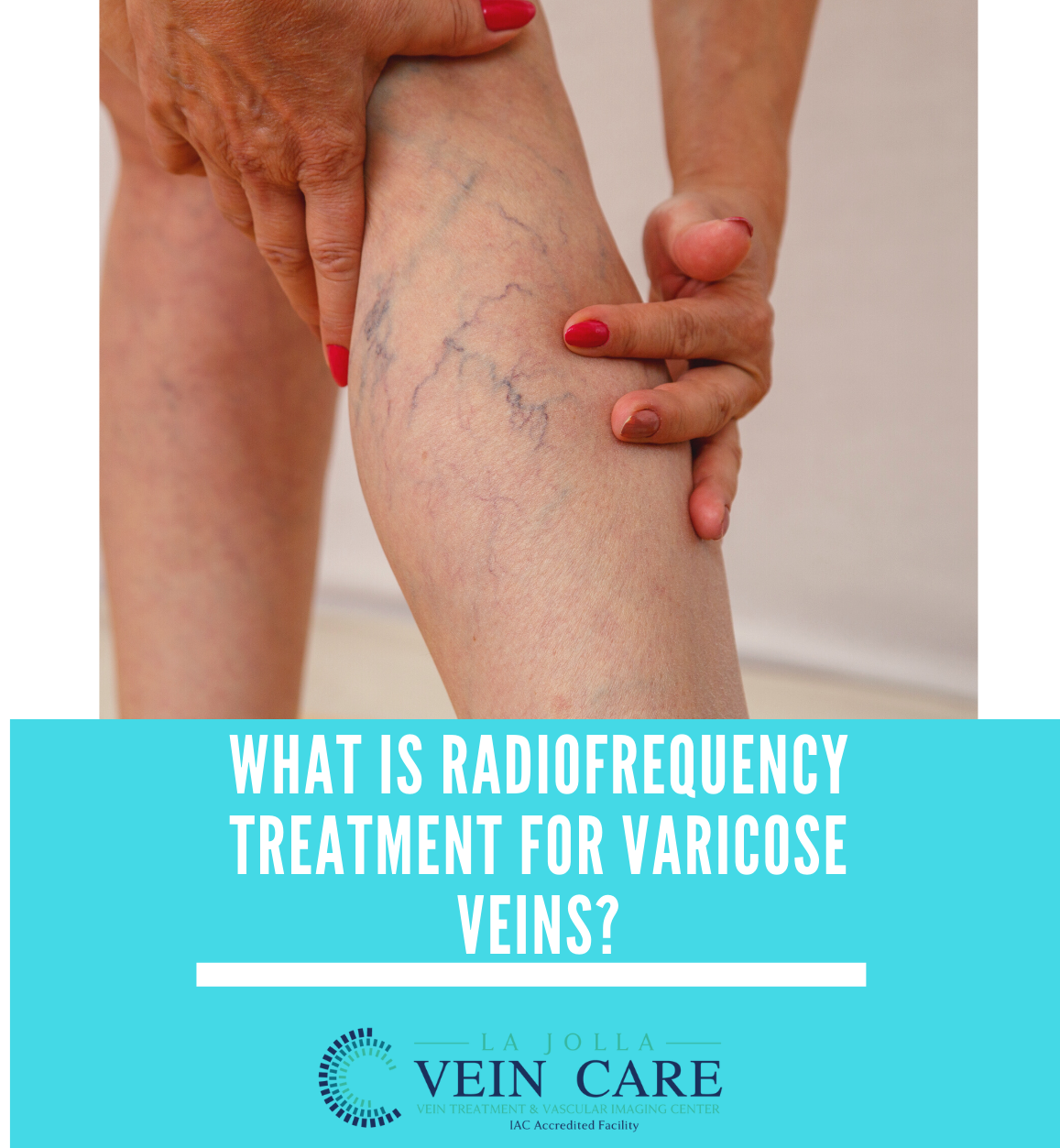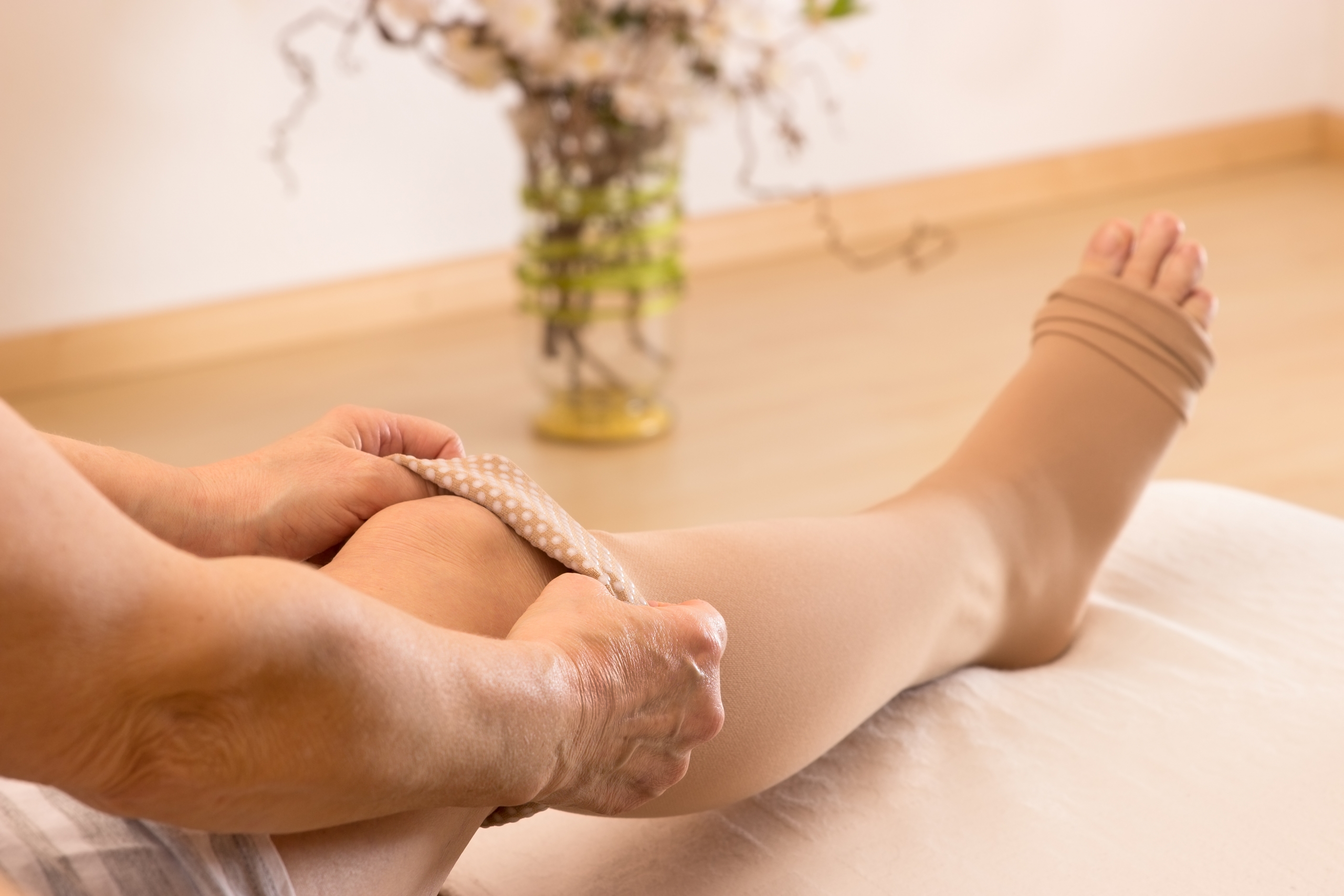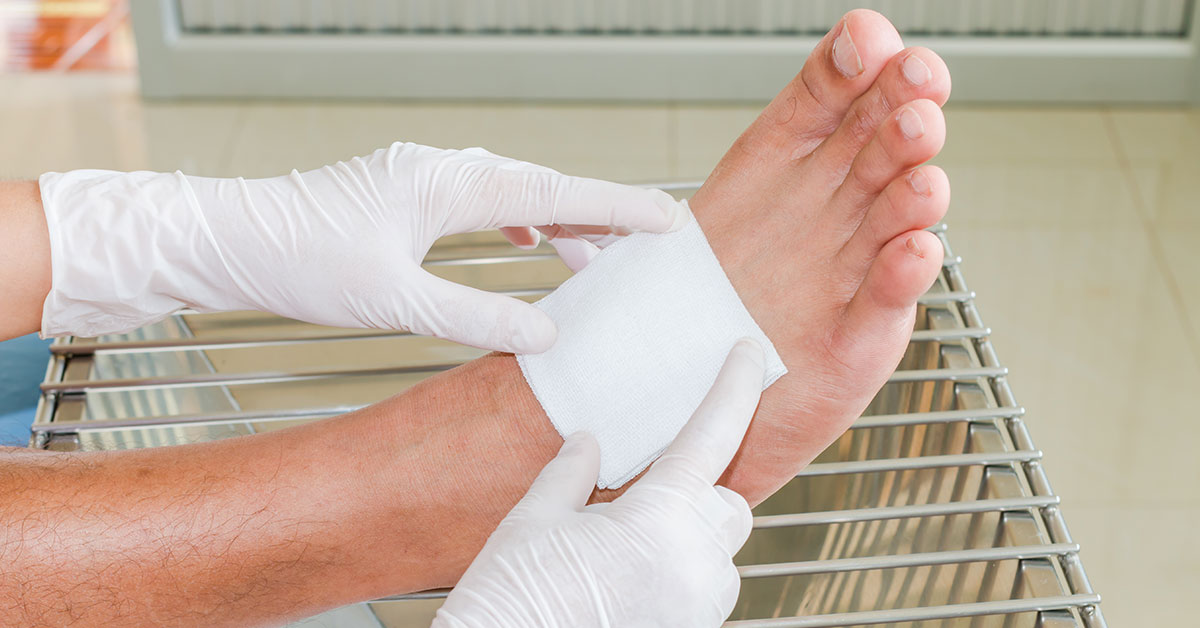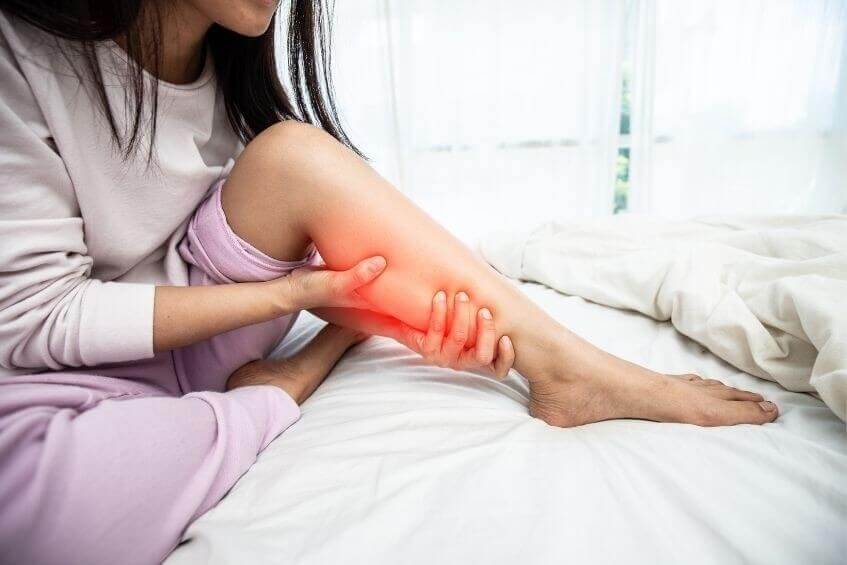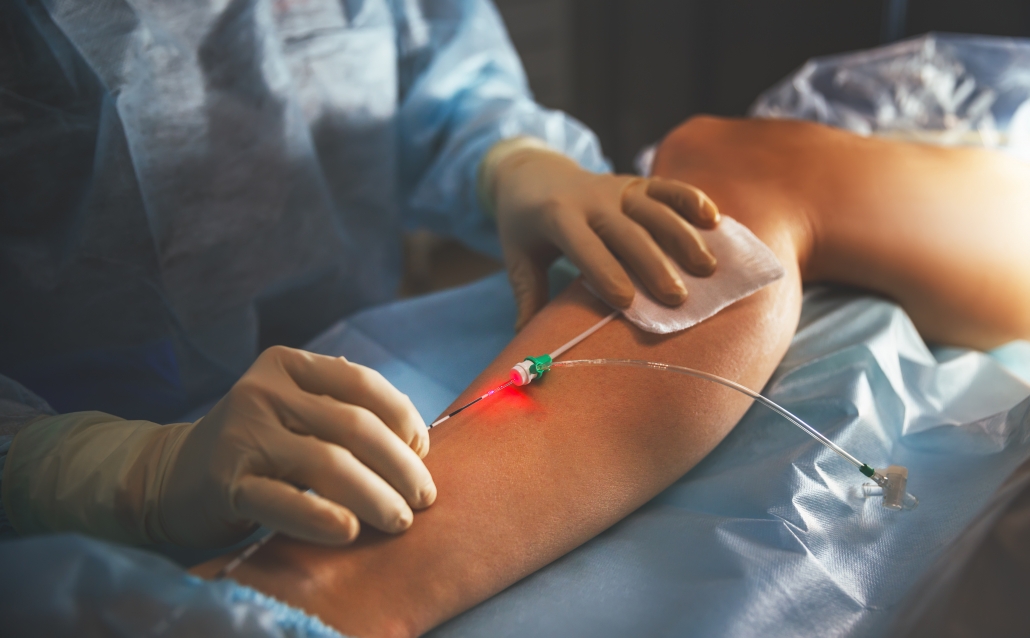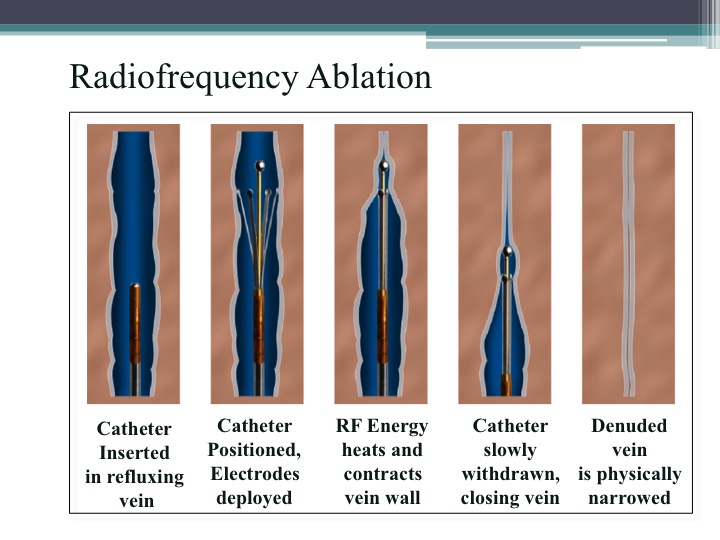What is Radiofrequency Treatment for Varicose Veins?
LJVascular2022-03-17T10:17:50-07:00At La Jolla Vein Care, we use a special procedure called radiofrequency treatment for varicose veins. This treatment uses a radiofrequency energy to heat up the wall of the vein. This treatment is used for varicose veins. Varicose veins develop when valves in the veins are damaged and this causes the veins to bulge or twist and stand out in the legs. Radiofrequency ablation treatment closes off the blood flow in the vein that causes the varicose veins.

Radiofrequency Ablation for Saphenous Vein Reflux
Why was I offered an endovenous radiofrequency ablation procedure?
Most patients who are offered a radiofrequency ablation procedure is for backwards flow (or reflux) in the saphenous vein(s). The great and small saphenous veins are the two main superficial veins of the leg. They run along the inner leg and the back of the leg, respectively. This minimally invasive procedure can be performed in the office in less than an hour and patients return to their usual level of activity the same day.
How does the treatment work?
The skin is numbed with lidocaine, then a tiny wire and the Closurefast catheter are inserted into the vein. The catheter delivers radio-frequency energy to the vein wall, causing it to seal shut. The remaining healthy veins continue to bring blood back to the heart.
What should I expect on the day of treatment?
The procedure is performed with local anesthesia, but many patients elect to use a mild oral sedative (Valium), which is taken after checking in and completing all paperwork. You will change into a gown and leave underwear on. Depending on the vein to be treated, you will lay on your back or on your belly. We do our best to make special accommodations (for example, if you cannot lie flat or cannot bend a knee very well) with body positioning and using pillows. We will do our best to make you comfortable. Then, we will give you the option of watching a movie on Netflix or listen to music. Once you are comfortable, your leg will be prepped with a cleansing solution for the sterile procedure. The doctor will perform an ultrasound to map the vein to be treated. Then, a numbing agent (lidocaine) will be injected into the skin.
In the numb area of the skin, a tiny puncture is made to pass the radiofrequency catheter. Your doctor will then use a needle to administer a combination of cool saline and local anesthetic around the vein either in the thigh or calf (depending on which vein is treated). This solution numbs the vein and insulates it from the surrounding tissue. After the numbing solution is applied, the vein is painlessly treated with radiofrequency energy. Once your vein has been treated, we will clean your leg and apply a compression stocking which you will wear for 72 hours continuously. You will walk for 30 minutes prior to getting in your car.
What should I do after treatment?
You should walk 30 minutes twice daily after treatment and move your legs frequently throughout the day with short walks and/or calf exercises. This will alleviate discomfort and avoid pooling of blood in the legs. Most of the numbing solution around the vein will be absorbed by your body within a few hours, but you may have a small amount of blood-tinged saline leak from your puncture site onto the gauze. In that case, just remove the gauze and roll your stockings back up.
What should I avoid after treatment?
For at least two weeks after treatment, you should avoid airline travel to minimize pooling of blood in the legs. You should avoid strenuous exercise (anything more than a brisk walk), heavy lifting, saunas or hot tubs, and leg massages. All of these dilate the superficial veins and interfere with their healing.
What are the possible adverse effects?
Expect some bruising over the injection sites, which fades over about two weeks. The skin overlying larger varicose veins may also develop some temporary inflammation and/or brownish hyperpigmentation as the blood products within those veins are absorbed by the body. An uncommon complication is a blood clot within a deep vein.
Before and After Varicose Vein Treatment
